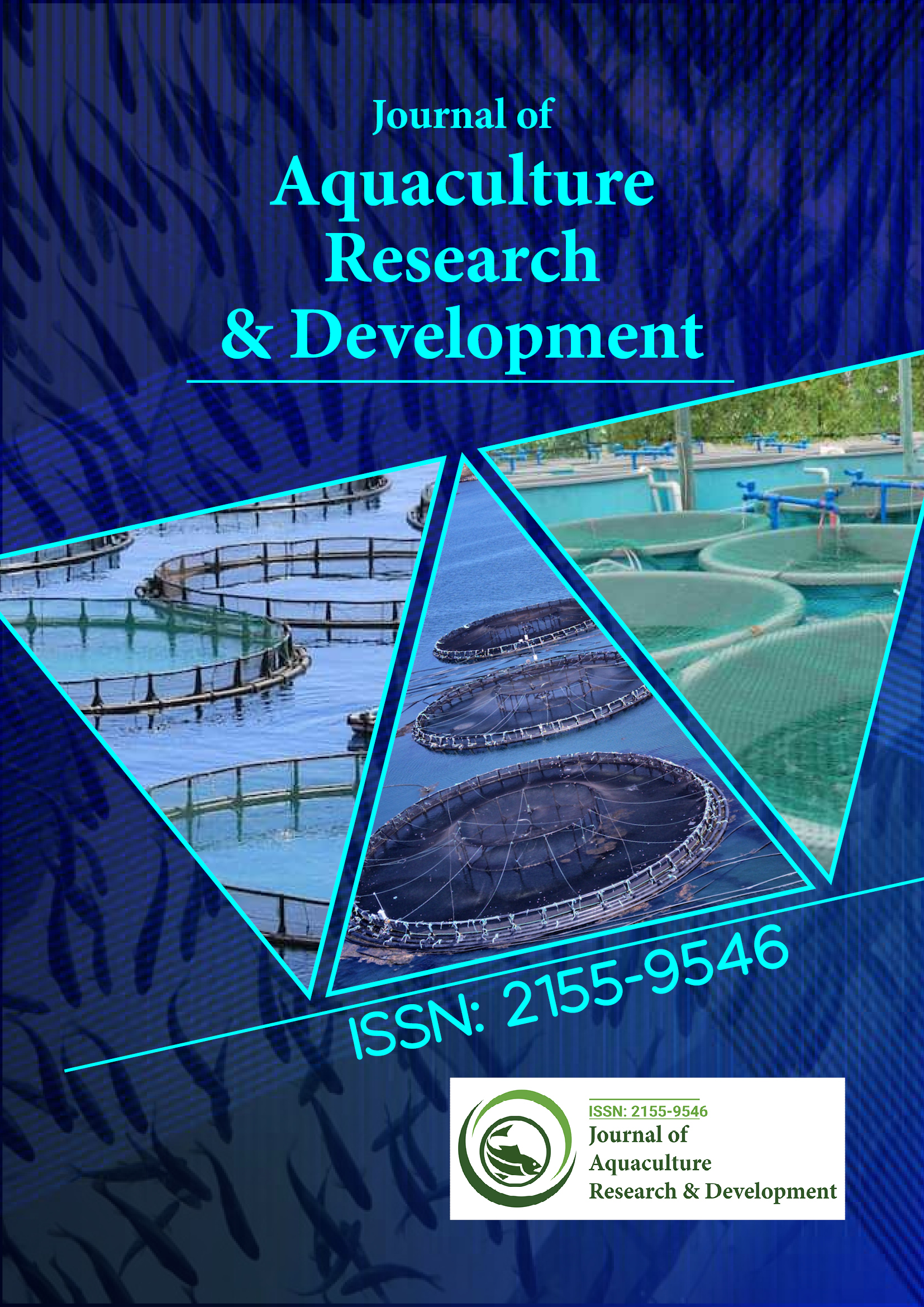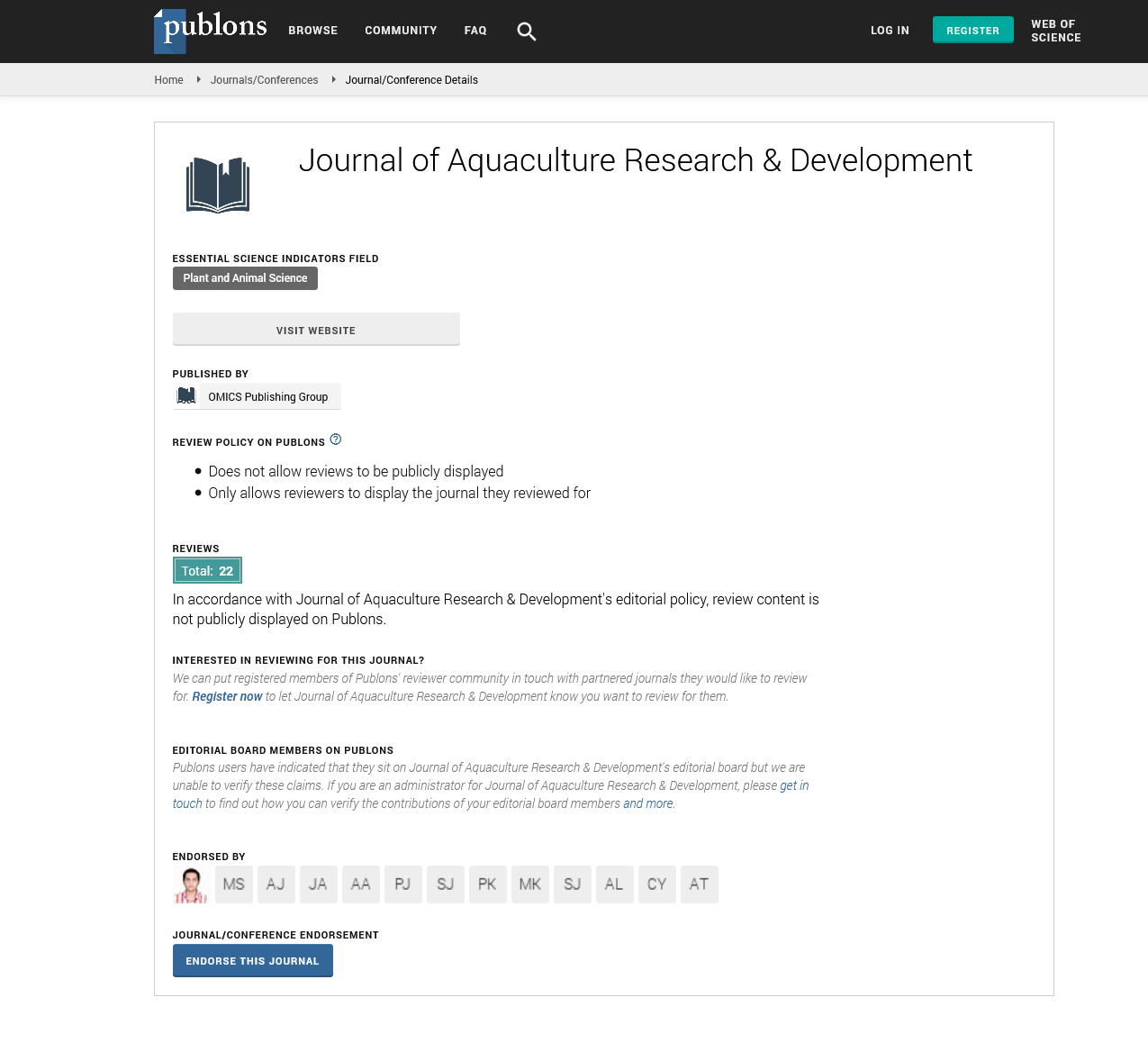Indexed In
- Online Access to Research in the Environment (OARE)
- Open J Gate
- Genamics JournalSeek
- JournalTOCs
- Scimago
- Ulrich's Periodicals Directory
- Access to Global Online Research in Agriculture (AGORA)
- Electronic Journals Library
- Centre for Agriculture and Biosciences International (CABI)
- RefSeek
- Directory of Research Journal Indexing (DRJI)
- Hamdard University
- EBSCO A-Z
- OCLC- WorldCat
- Scholarsteer
- SWB online catalog
- Virtual Library of Biology (vifabio)
- Publons
- MIAR
- University Grants Commission
- Euro Pub
- Google Scholar
Useful Links
Share This Page
Journal Flyer

Open Access Journals
- Agri and Aquaculture
- Biochemistry
- Bioinformatics & Systems Biology
- Business & Management
- Chemistry
- Clinical Sciences
- Engineering
- Food & Nutrition
- General Science
- Genetics & Molecular Biology
- Immunology & Microbiology
- Medical Sciences
- Neuroscience & Psychology
- Nursing & Health Care
- Pharmaceutical Sciences
Short Communication - (2025) Volume 16, Issue 4
Monitoring Nutrient Transfer in Intensive Mariculture Systems
Cathrine Dinis*Received: 28-Mar-2025, Manuscript No. JARD-25-29666; Editor assigned: 01-Apr-2025, Pre QC No. JARD-25-29666 (PQ); Reviewed: 15-Apr-2025, QC No. JARD-25-29666; Revised: 22-Apr-2025, Manuscript No. JARD-25-29666 (R); Published: 29-Apr-2025, DOI: 10.35248/2155-9546.25.16.977
Description
Mariculture, the farming of marine organisms in controlled coastal and offshore environments, has developed into one of the fastest-growing food production sectors worldwide. Driven by increasing demand for seafood and the declining capacity of wild fisheries to meet global consumption needs, mariculture now provides a substantial proportion of fish, shellfish and algae consumed by humans. Intensive mariculture systems, particularly those designed for finfish and crustaceans, are characterized by high stocking densities, significant use of formulated feeds and the employment of engineered enclosures such as cages, ponds, or recirculating systems. These systems are highly productive, often yielding several tons of biomass per hectare annually. However, this productivity comes with ecological costs, especially regarding nutrient loading and cycling.
Nutrient cycling within mariculture systems refers to the movement, transformation and fate of key elements such as nitrogen, phosphorus and carbon. These elements are essential for the growth of cultured organisms but can also accumulate in surrounding environments, leading to ecological disruptions. Unlike traditional extensive aquaculture systems, which rely primarily on natural productivity, intensive mariculture introduces large amounts of external nutrients in the form of formulated feed, fertilizers and additives. The balance between nutrient inputs, retention by cultured species, transformations within the system and outputs to the environment determines the overall sustainability of mariculture operations [1-3].
Nutrient inputs in intensive mariculture
The largest source of nutrient input in intensive mariculture is formulated feed. Finfish and crustacean diets typically consist of fishmeal, fish oil, plant proteins and carbohydrate-based binders, providing protein, lipids and energy for growth. However, the conversion of feed nutrients into biomass is inefficient. Estimates suggest that 60-80% of nitrogen and phosphorus inputs to mariculture originate from feed and only a fraction of these nutrients are ultimately retained.
Water exchange with coastal or open-sea environments introduces another layer of complexity. Tidal flows and seawater intake can bring dissolved nutrients into farming systems, altering nutrient dynamics. In integrated systems, nutrient-rich water from one culture unit may support primary production or filter feeders in another. However, in open-net systems, these flows can also accelerate the discharge of excess nutrients into surrounding environments [4-7].
Nutrient outputs and environmental impacts
Nutrient outputs from mariculture can affect both the immediate environment and broader coastal ecosystems. Dissolved nitrogen compounds such as ammonia and nitrate elevate nutrient levels in the water column, potentially triggering phytoplankton blooms. While some blooms may be harmless, others involve toxic or harmful algal species that threaten aquaculture stocks and wild fisheries alike. Phosphorus release also contributes to eutrophication, particularly in systems where nitrogen is already abundant [8-10].
Particulate waste accumulates in sediments beneath farms, leading to organic enrichment, hypoxia and shifts in benthic community composition. Sensitive benthic organisms may decline, while opportunistic species that tolerate low oxygen conditions become dominant. This process reduces biodiversity and alters ecosystem functioning.
Conclusion
Nutrient cycling in intensive mariculture represents both a challenge and an opportunity. On one hand, high feed inputs and low retention efficiencies contribute to significant nutrient loading in coastal environments. On the other hand, improved management and system design can enhance nutrient recycling and reduce ecological impacts. Advances in feed formulation, including the use of more digestible ingredients and precise feeding practices, can increase nutrient assimilation and decrease waste. Integrated Multi-Trophic Aquaculture (IMTA), which combines finfish with shellfish, seaweeds, or other extractive species, provides a promising approach to capturing and recycling waste nutrients within the system.
Technological innovations, such as recirculating aquaculture systems with biofilters and waste treatment units, also reduce nutrient discharges by retaining and processing wastes on-site. At the same time, ecological monitoring and modeling are essential for predicting nutrient flows and setting site-specific management thresholds.
The sustainability of intensive mariculture ultimately depends on how effectively nutrient cycles are managed. Continuous evaluation, adaptive management and the integration of ecological principles into production systems are essential to ensure that mariculture contributes to food security without compromising marine ecosystem health. By balancing productivity with environmental stewardship, mariculture has the potential to play a central role in meeting global seafood demand sustainably.
References
- Clawson G, Kuempel CD, Frazier M, Blasco G, Cottrell RS, Froehlich HE, et al. Mapping the spatial distribution of global mariculture production. Aquaculture. 2022;553:738066.
- Chen L, Yuan X, Ye Y, Teng J, Zhao J, Wang Q, et al. Characteristics and spatiotemporal distribution of microplastics in sediments from a typical mariculture pond area in Qingduizi Bay, North Yellow Sea, China. Mar Pollut Bull. 2022;176:113436.
- Zhu Z, Yogev U, Goddek S, Yang F, Keesman KJ, Gross A. Carbon dynamics and energy recovery in a novel near-zero waste aquaponics system with onsite anaerobic treatment. Sci Total Environ. 2022;833:155245.
- Li C, Zhu L, Li WT, Li D. Microplastics in the seagrass ecosystems: A critical review. Sci Total Environ. 2023;902:166152.
- Sultana F, Wahab MA, Nahiduzzaman M, Mohiuddin M, Iqbal MZ, Shakil A, et al. Seaweed farming for food and nutritional security, climate change mitigation and adaptation, and women empowerment: A review. Aquac Fish. 2023;8(5):463-480.
- Song Y, Li M, Fang Y, Liu X, Yao H, Fan C, et al. Effect of cage culture on sedimentary heavy metal and water nutrient pollution: Case study in Sansha Bay, China. Sci Total Environ. 2023;899:165635.
- Nagarajan D, Chen CW, Ponnusamy VK, Dong CD, Lee DJ, Chang JS. Sustainable aquaculture and seafood production using microalgal technology-A circular bioeconomy perspective. Chemosphere. 2024;366:143502.
- Ou LJ, Wang Z, Ding GM, Han FX, Cen JY, Dai XF, et al. Organic nutrient availability and extracellular enzyme activities influence harmful algal bloom proliferation in a coastal aquaculture area. Aquaculture. 2024;582:740530.
- Jiang S, Yang J, Wu C, Du H, Zheng H, Lin Q, et al. Purification of inorganic nitrogen from the mariculture tail water by anaerobic/anoxic/oxic (A2O) process. Mar Pollut Bull. 2024;203:116404.
- Zhao JR, Li X, Yang YL, Fan XY. Impact of typhoon on nutrient contaminants, antibiotic resistance genes and microbial communities in mariculture tailwater treatment system. Environ Res. 2025;273:121230.
Citation: Dinis C (2025). Monitoring Nutrient Transfer in Intensive Mariculture Systems. J Aquac Res Dev. 16:977.
Copyright: © 2025 Dinis C. This is an open-access article distributed under the terms of the Creative Commons Attribution License, which permits unrestricted use, distribution, and reproduction in any medium, provided the original author and source are credited.

